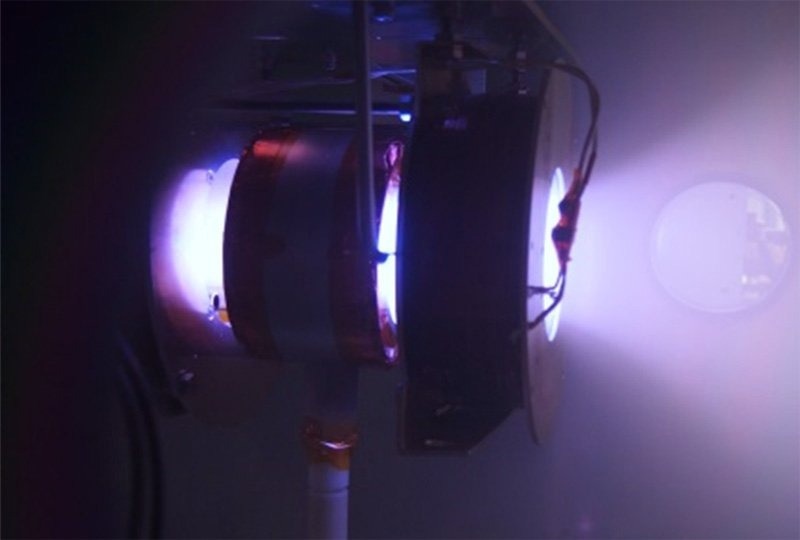Reviewed by Alex SmithNov 14 2022
A high-power electrodeless plasma thruster’s performance has been improved by a researcher at Tohoku University, bringing us one step closer to further space exploration.
 The magnetic nozzle rf plasma thruster operated in a Mega hpt vacuum chamber at Tohoku University. Image Credit: Kazunori Takahashi
The magnetic nozzle rf plasma thruster operated in a Mega hpt vacuum chamber at Tohoku University. Image Credit: Kazunori Takahashi
Until now, historical technologies and industries have been driven by advancements in terrestrial transportation technologies, such as automobiles, trains, and aircraft; however, electric propulsion technology is now enabling a similar breakthrough in space.
An electromagnetic field is used in the electric propulsion method to accelerate fuel and produce thrust, which moves a spacecraft forward. Space agencies' development of electric propulsion technology has paved the way for future space travel.
Electric propulsion systems like Hall thrusters and gridded ion thrusters have already been used to complete several successful space missions. When the propellant becomes ionized, or a plasma, and is accelerated by electromagnetic fields, solar energy is transformed into thrust energy.
However, the electrodes required for these devices limit their lifetime because they are exposed to the plasma and are harmed by it, especially at high power levels.
Scientists have developed electrodeless plasma thrusters as a workaround for this. Radio frequency (rf) is one such technology used to create plasma. A magnetic nozzle channels and accelerates the plasma produced by radio waves emitted from an antenna inside a cylindrical chamber to produce thrust.
Helicon thrusters, also known as MN rf plasma thrusters, provide simplicity, operational flexibility, and a potential high thrust-to-power ratio.
The efficiency of the rf power to thrust energy conversion, however, has stymied the development of MN rf plasma thrusters. Early experiments produced conversion rates in the single digits, but more recent research has come up with a modest result of 20%.
Professor Kazunori Takahashi from the Department of Electrical Engineering at Tohoku University recently accomplished a 30% conversion efficiency.
The current 30% efficiency was achieved with argon propellant, unlike the more advanced electric propulsion devices that frequently use xenon gas, which is expensive and challenging to obtain in large enough quantities. This suggests that an MN rf plasma thruster would lower the price and the demand on Earth’s resources.
Applying a cusp-type magnetic field inhibited the energy loss that generally occurs to the plasma source wall. The breakthrough opens the door to advances in high-power space transportation technology.
Kazunori Takahashi, Professor, Department of Electrical Engineering, Tohoku University
Journal Reference:
Takahashi, K. (2022) Thirty percent conversion efficiency from radiofrequency power to thrust energy in a magnetic nozzle plasma thruster. Scientific Reports. doi:10.1038/s41598-022-22789-7.